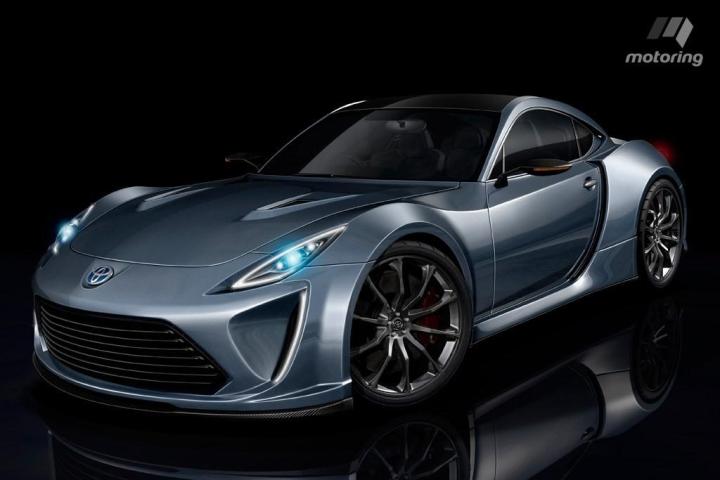
Both cars will ride on a brand new chassis that will make extensive use of lightweight materials such as aluminum and carbon fiber. Described by insiders as a frame-based format, the chassis will allow each brand to design completely different bodies that will not look anything alike.
“The Toyota variant’s exterior styling was finalized in the third quarter of last year, but you’ll be surprised at how good it looks. The car does not look like a Toyota,” revealed a source close to the car maker in an interview with Australian magazine Motoring.
A rendering published in the latest issue of Japanese magazine HolidayAuto gives us a plausible idea of what it could look like.
The two cars will stretch approximately 177 inches long, 72 inches wide, and 52 inches tall, dimensions that will make them about as big as a rear-wheel drive Porsche 911.
BMW’s version of the car will launch with two gasoline-burning engines designed in-house and a plug-in hybrid drivetrain developed by Toyota. Base models will get a turbocharged 2.0-liter four-cylinder rated at 241 horsepower and 258 foot-pounds of torque. Midrange models will be powered by a turbocharged 3.0-liter straight-six tuned to make 335 ponies and over 331 foot-pounds of twist. Finally, range-topping versions will benefit from a 473-horsepower gasoline-electric drivetrain made up of the aforementioned six-cylinder and a Toyota-supplied electric motor.
Interestingly, the Toyota-badged version will forego the smaller four-banger and it will only be offered with the straight-six and the plug-in hybrid drivetrain. The Japanese car maker presumably wants to ensure the Supra will not overlap with the next generation of the Scion FR-S.
While BMW is very secretive about its next Z4, Toyota has hinted that it will preview the upcoming Supra with a close-to-production concept that will be introduced either next January at the Detroit Motor Show or the following March at the Geneva Motor Show.
Both cars are scheduled to go on sale globally in 2018. An earlier report claims the Supra will cost more than a Chevrolet Corvette Stingray, which carries a base price of $55,000 before a mandatory destination charge is factored in.
Editors' Recommendations
- Intel’s next GPU just leaked, and it looks like a sub-$200 card worth buying
- The next iPhone will look more like an iPad Pro, report says
- BMW stripped weight and added power to make its pint-sized M2 even better
- Toyota gives its sweet, race-ready Supra the green flag for production
- Toyota leapfrogs competition: Level 4 self driving due next summer




